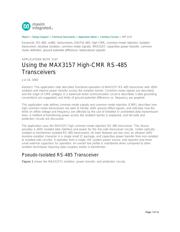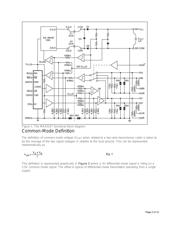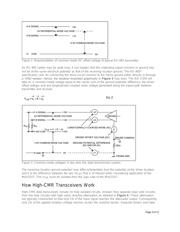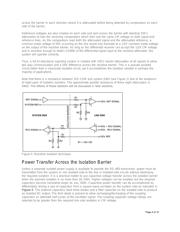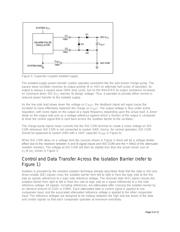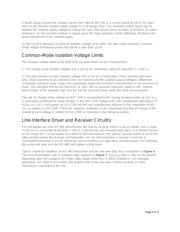herunterladen

Maxim > Design Support > Technical Documents > Application Notes > Interface Circuits > APP 1137
Keywords: RS-485, rs485, transceivers, EIA/TIA-485, high CMR, common-mode rejection, isolated
transceiver, resistive isolation, common-mode signals, MAX3157, capacitive power transfer, common
mode definition, ground potential difference, bidirectional signalin
APPLICATION NOTE 1137
Using the MAX3157 High-CMR RS-485
Transceivers
Jul 24, 2002
Abstract: This application note describes functional operation of MAX3157 RS-485 transceiver with ±50V
isolation and internal power transfer across the isolation barrier. Common-mode signals are described,
and the origin of CMR voltages in a balanced wired communication circuit is described. Cable grounding
conventions are suggested, and limits of ground-potential difference vs. frequency are graphed.
This application note defines common-mode signals and common-mode-rejection (CMR), describes how
high-common-mode transceivers are able to handle ±50V ground-offset signals, and indicates how the
limits on offset voltage and frequency are affected by the use of shielded or unshielded data-transmission
lines. A method of transferring power across the isolation barrier is explained, and fail-safe and
protection circuits are discussed.
The application uses the MAX3157 high common-mode-rejection RS-485 transceiver. This device
provides a ±50V isolated data interface and power for the line-side transceiver circuits. Unlike optically-
isolated or transformer-isolated RS-485 transceivers, its main features are low cost, an allowed ±50V
resistive-isolation character in a single small IC package, and capacitive power transfer from non-isolated
to isolated-side circuitry. It operates from a single +5V system-power source, and requires only three
small external capacitors for operation. An overall low profile is maintained when compared to other
isolation techniques requiring opto-couplers and/or a transformer.
Pseudo-Isolated RS-485 Transceiver
Figure 1 shows the MAX3157's isolation, power-transfer, and protection circuits.
Page 1 of 12
Verzeichnis


